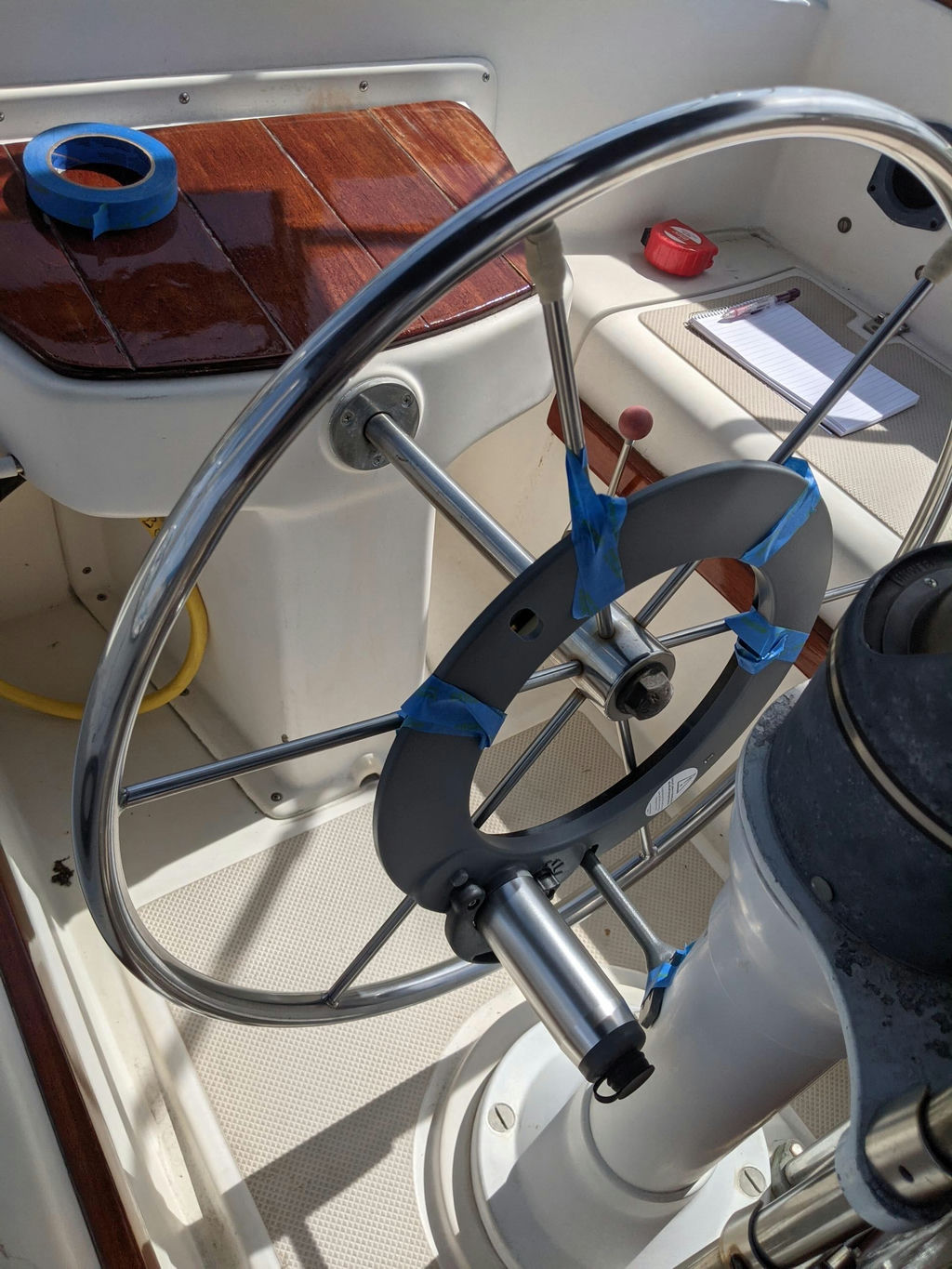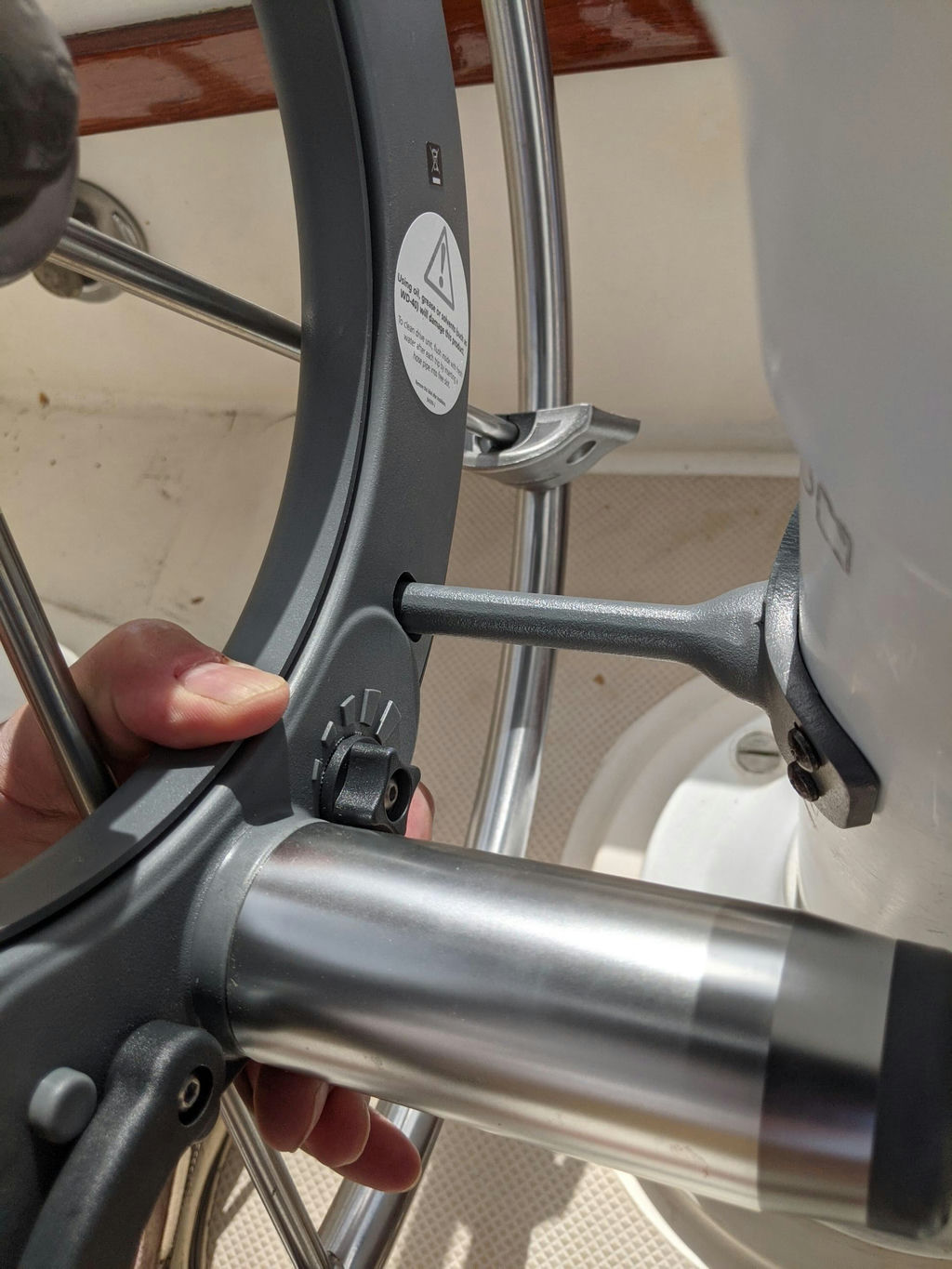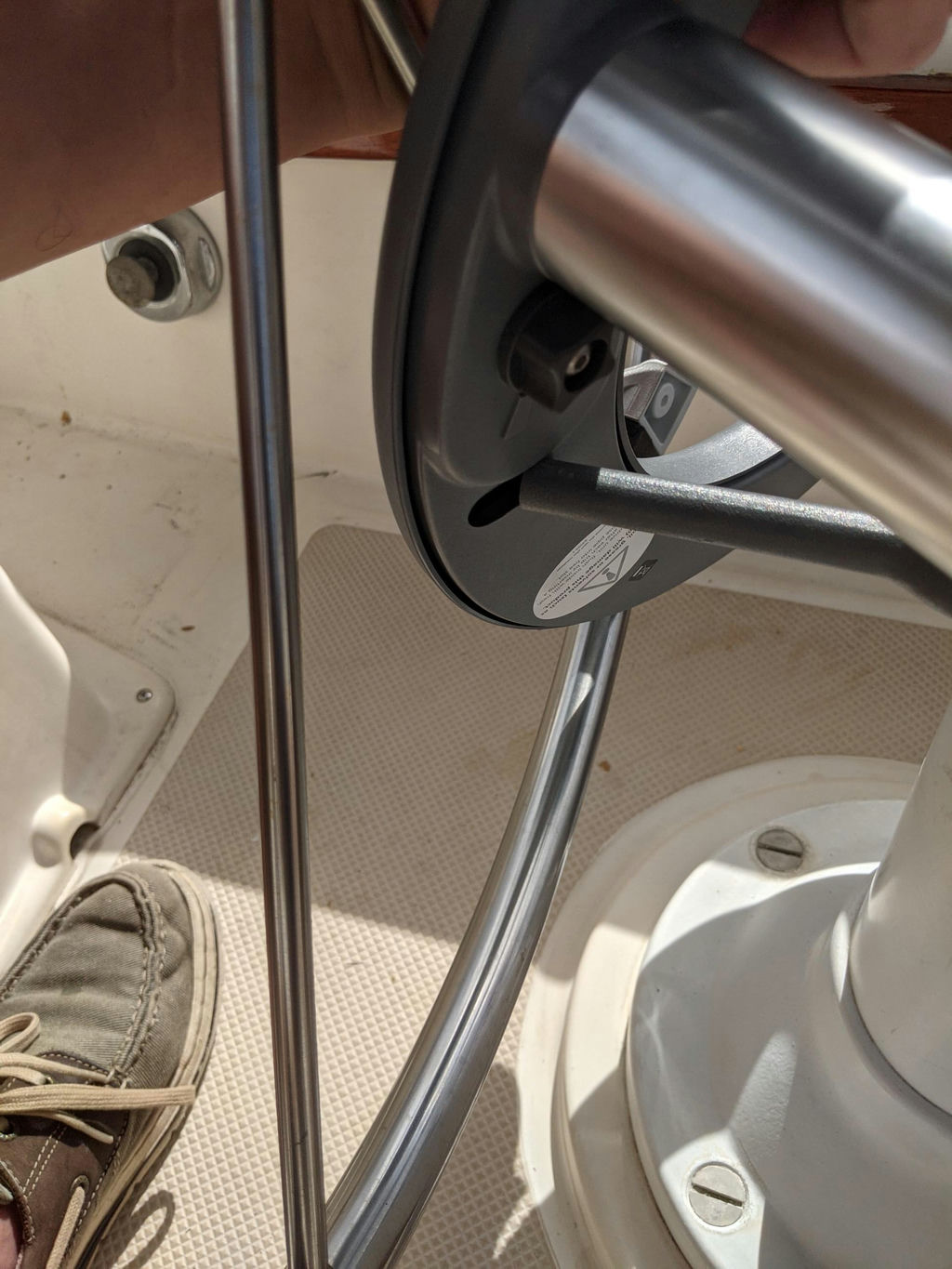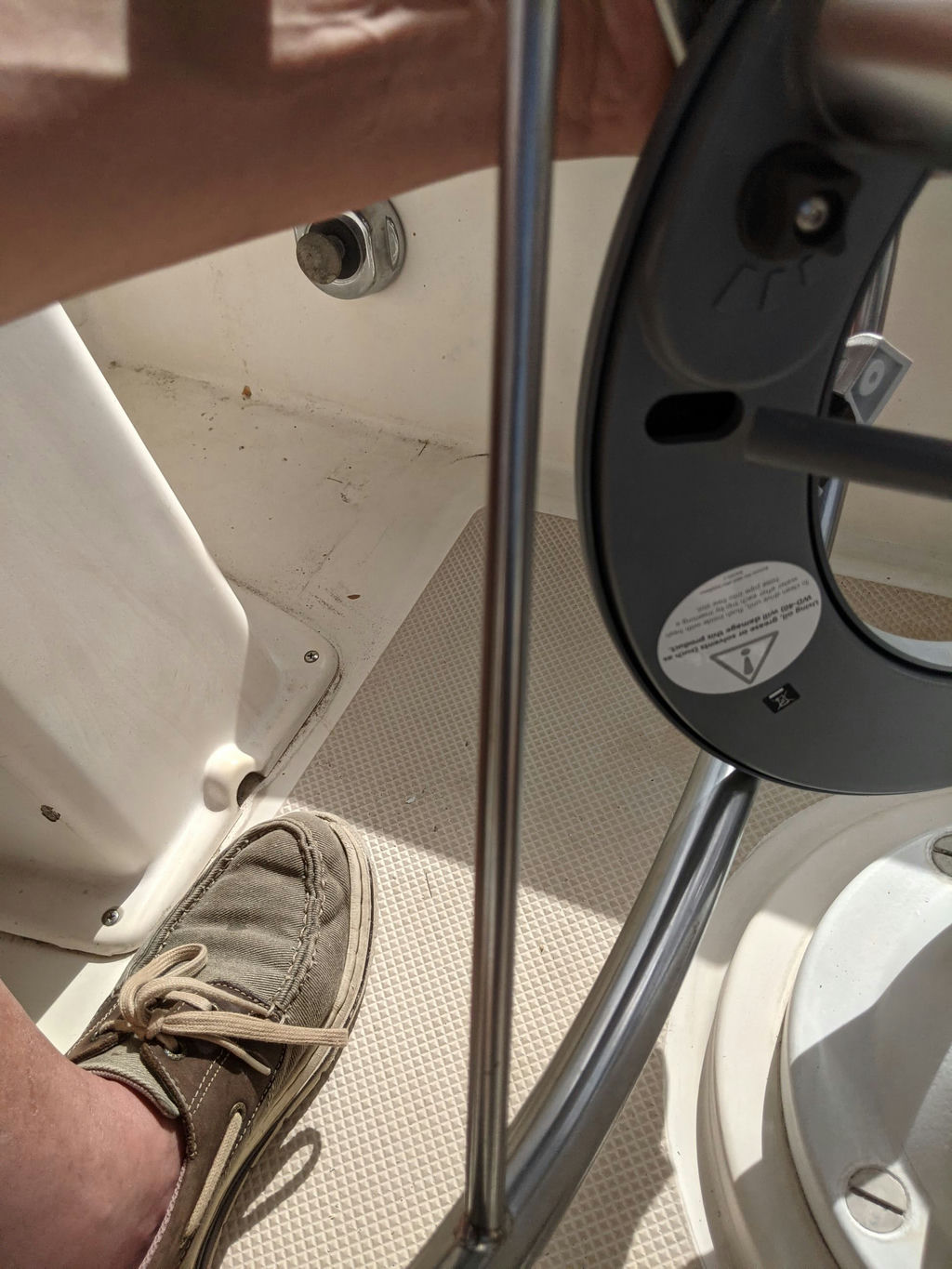Installing a Raymarine Evo 100 wheeldrive in my Island Packet

Installing a Raymarine Evo 100 wheeldrive in my Island Packet 27. It's a tight fit, and the wheel is backwards.
I did the usual research, but there aren"t really many options if you want a modern, networkable autopilot. For larger boats, you might consider an internal drive, and owners on the ip home site have gone this way. But Raymarine has the specs, the history of reliability and economies of scale. I like that their equipment tends to fail in predicatable ways by virtue of their continual improvements.
Caveat: this is a project in progress! I have not commissioned the system yet, so have no proof that my seemingly good ideas work in practice.
Challenges on the Island Packet 27
The wheel runs back to the rudder, not fore to the binnacle.
A "beloved" quirk of the Island Packet is that the wheel is attached to a (sturdy) axle that runs between the skipper"s legs back to a (hefty) rack and pinion gear on the rudder shaft. To remove the wheel from the shaft, you slide it forward. This is opposite most wheel helms, which are attached to the binnacle and removed by sliding aft-wards.
Raymarine provides a flange to mount on the binnacle with a pin that engages the inner ring of the wheel pilot and keeps it from turning when the motor turns the outer ring (and attached wheel).

This pin prevents the wheel from moving bowward and the steering axle prevents the wheel from moving sternward. There's only about 10 mm (¼ in.) for the pin to engage with the slot on the inner ring and not scrape the outer (rotating) ring of the wheel drive. Contrast this with the layout on most boats, where the steering axle and the pin are on the same side of the wheel.
I was concerned that the only way I"d be able to remove the wheel after installation would be to unscrew the flange from the binnacle each time, and those fasteners are merely field tapped sheet metal screws.
But topology comes to the rescue. If you first remove the brackets holding the wheeldrive to the spokes of the wheel (of which more, next), you can then tip the top of the ring forward, which moves the bottom of the ring (where the pin engages) aft, just enough to create wiggle room to pivot the wheel drive off the pin and out of the way. Then you"re free to remove the wheel or do whatever else you need.



Destroyer wheel spokes are too thin
For attaching the wheel pilot to the wheel itself, Raymarine provides split rubber spacers fit around the spokes and clamps that fasten them to the driven (outer) ring. They provide spacers for 12mm and 10mm spokes, but not the 8mm spokes I find on my boat.
I stressed over this for a while, but when I actually installed the drive, I saw that geometry is once again my friend. The 3 spacers are distributed 120° apart and the wheel has very little play even with the loose fit.
I'll revisit this after commissioning. If necessary, I can wrap a few turns of rescue tape under the spacers to build up the thickness. However, I'm reluctant to create another anoxic zone that might invite crevice corrosion.